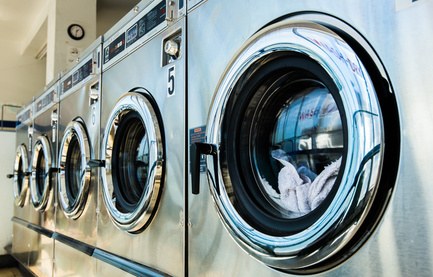
Low Tech Approach
Saving energy does not have to be high tech. It could be as simple as choosing a cold-water laundry detergent.
Low Temp Laundry Detergents
In the old days, the rules for washing clothes said to use hot water (130°F) for whites, disinfecting (e.g. diapers), or really dirty clothes. Warm water washing (90°F) was used for the majority of laundry. There have since been big improvements in laundry detergents; they clean better at lower temperatures. With the improvements to detergents, those whites can be effectively washed with water that is about 30 degrees cooler. That ends up saving a lot of energy to heat water. Low temperature laundry detergents were first introduced in the residential market in 2005 with Tide Coldwater. Detergents for commercial applications were available in 2011. Not only do they save a lot of energy, they also save a lot of water.
The three work horses of low temp laundry detergents are enzymes, polymers, and surfactants – what? Here’s how they do their job cleaning dirty laundry, saving energy and water:
- Better enzymes break down the dirt and stains at lower temperatures
- Better polymers and surfactants keep the dirt and grease suspended in the water so less rinse cycles are needed
What are good applications?
Low temperature laundry detergents are a great application for institutional facilities that do laundry on site. This includes hotels, which are 70% of the market. Other places include nursing homes, hospitals, prisons, jails, and universities.
Since the hotel sector is so large, it is worth taking a look at the savings potential. A typical mid-scale hotel has about 80 rooms and an occupancy rate of 65%. In the laundry room, this hotel probably spends about $2,000 for water, $4,000 for natural gas to heat the water and $5,000 for laundry detergent per year. Using a low temp laundry detergent could save about $1,300 in natural gas costs and $1,000 for water.
Considerations
For this example, the incremental cost of the low temp laundry detergent was $1,000. Low temp detergents also require programmable washers, which is the standard for commercial washers these days. This not only is a good investment for energy savings, but the water savings is an added environmental benefit. Finally, low temperature laundry will make those towels and sheets last longer.




